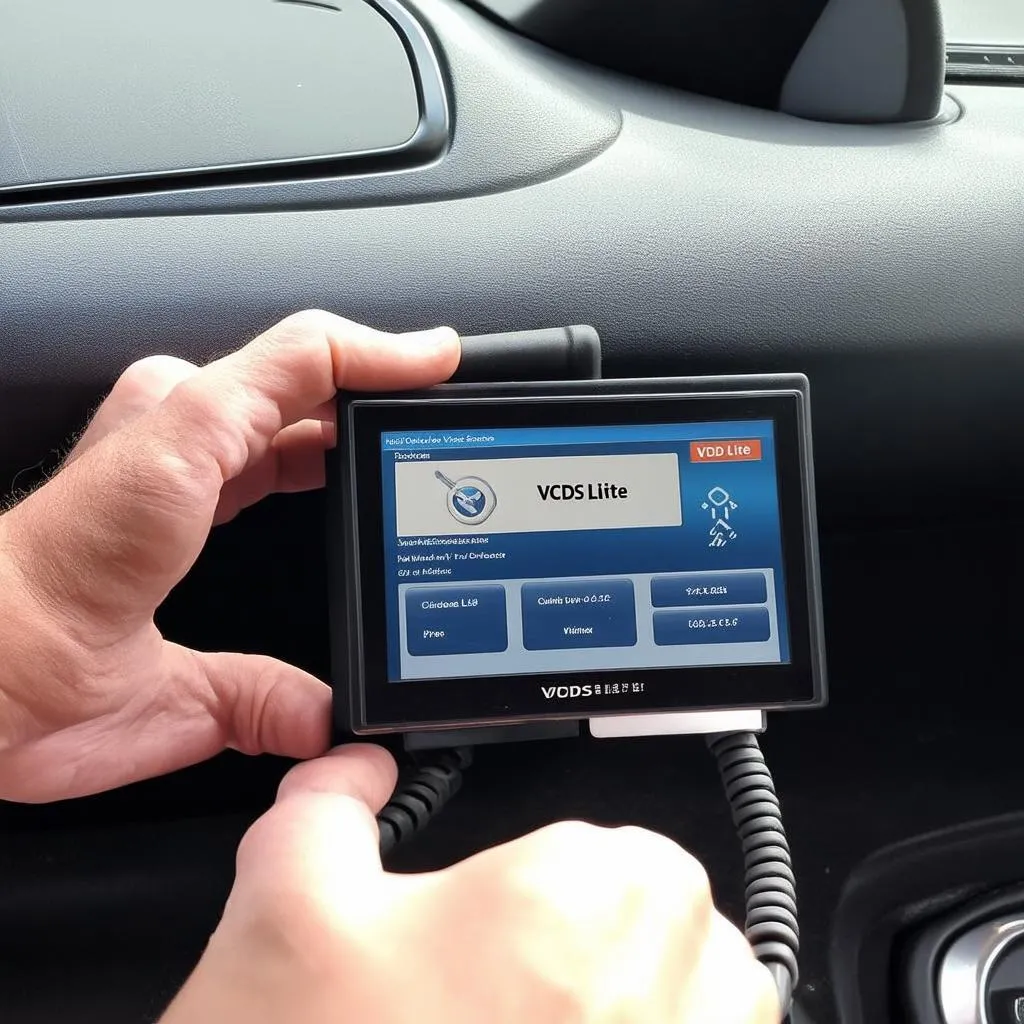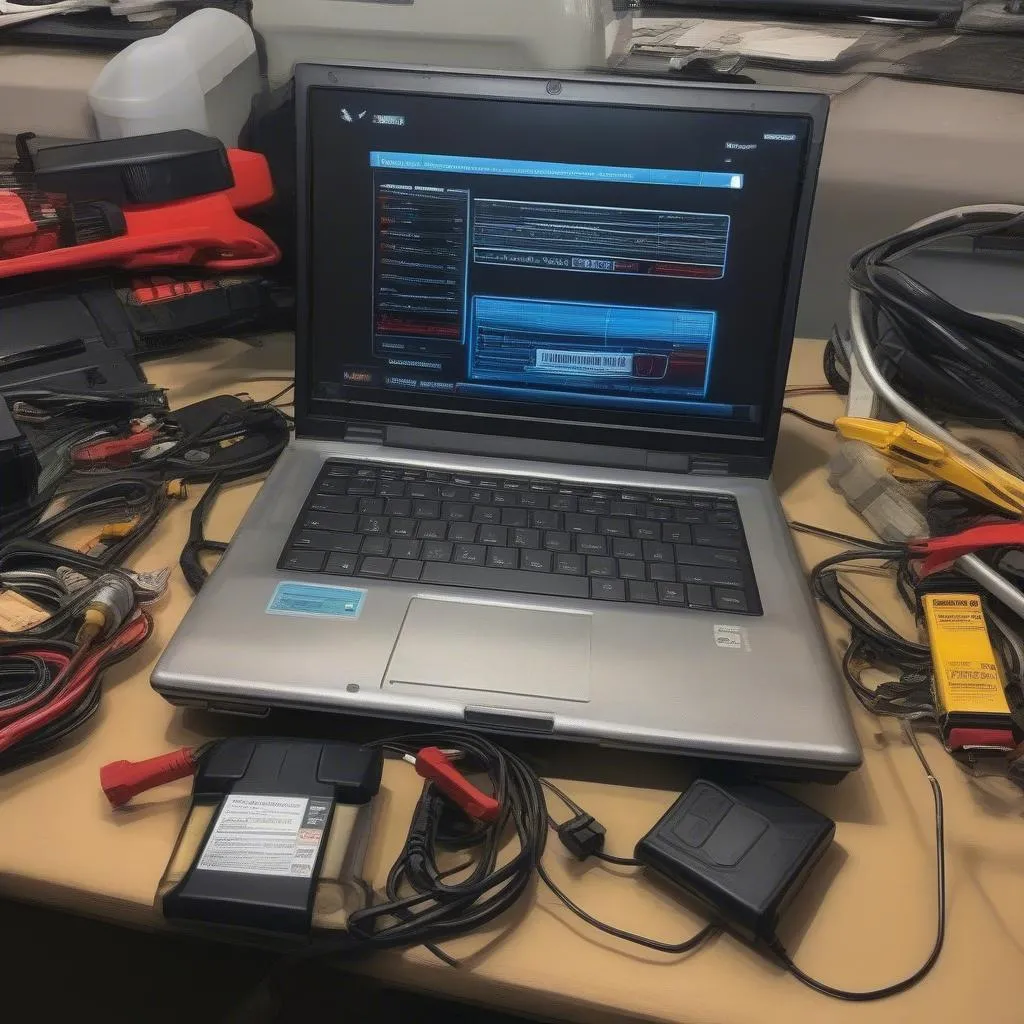If you’re a Volkswagen owner, you’ve likely encountered the term “Component Protection.” This sophisticated system is designed to deter theft by electronically locking certain components to your car. While effective for security, it can become a headache when replacing parts. This is where VCDS, a powerful diagnostic software, comes into play.
Understanding VW Component Protection
Think of Component Protection as a digital handshake between your car’s control modules and its components. If a component is replaced without proper authorization, the system detects a mismatch and activates Component Protection, rendering the new part non-functional.Contact Here for Free Video Tutorial.
Enter VCDS: Your Key to Removing Component Protection
VCDS (Vag-Com Diagnostic System) is a Windows-based software that allows for in-depth communication with your Volkswagen’s control units. This includes the ability to remove Component Protection and adapt new or used components to your vehicle.
Why VCDS?
While other tools might claim to remove Component Protection, VCDS excels in its user-friendliness and detailed documentation. This is crucial for avoiding costly mistakes during the process.
“Using VCDS for Component Protection removal is like having the factory workshop manuals at your fingertips,” says Michael Schmidt, an automotive electronics specialist and author of “Modern Automotive Diagnostics.” “Its intuitive interface and extensive coding capabilities give both professionals and DIYers the power to work confidently with complex vehicle systems.”
 VCDS Software Interface
VCDS Software Interface
How to Remove Component Protection with VCDS:
Disclaimer: This guide is for informational purposes only. Always consult a qualified automotive electrician before attempting any modifications to your vehicle’s electronics.
- Connect Your VCDS Interface: Ensure you have a genuine VCDS interface and the latest software version installed on your Windows PC. Connect the interface to your vehicle’s OBD-II port.
- Establish Communication: Turn on your vehicle’s ignition. Launch VCDS and select the appropriate model and control unit containing the component requiring adaptation.
- Access Adaptation Channels: Navigate to the “Adaptation” section within the control unit. Each component has specific adaptation channels that need to be adjusted.
- Input Component Information: Depending on the part, you might need to input information like the part number or coding string. Refer to your component’s documentation or contact your dealer for this information.
- Execute Adaptation: Carefully follow the on-screen prompts to finalize the adaptation process. After a successful adaptation, Component Protection should be removed, and the new component should function correctly.
Precautions and Considerations:
- Genuine Software and Interface: Always use genuine VCDS software and interface to avoid potential damage to your vehicle’s electronics.
- Backup Your Existing Coding: Before making any changes, back up your existing control unit coding in case you need to revert to the previous settings.
- Professional Assistance: If you’re unsure about any step, don’t hesitate to seek assistance from a qualified automotive electrician experienced in VCDS.
FAQs
Q: Can I use VCDS to remove Component Protection on any VW model?
A: VCDS supports a wide range of Volkswagen models. However, the specific procedures and functionalities might vary depending on the model year and the control unit in question.
Q: Is VCDS a one-time purchase?
A: Yes, VCDS is typically a one-time purchase. However, you might need to purchase updates in the future to maintain compatibility with the latest Volkswagen models and software revisions.
Q: Where can I find reliable information about VCDS coding and adaptation channels?
A: The official Ross-Tech website (the developer of VCDS) offers comprehensive documentation and forums where you can find detailed information and support.
Need Expert Help with Your VW?
Cardiagtech offers a range of high-quality diagnostic tools and resources, including VCDS, to help you maintain and troubleshoot your Volkswagen. Contact us today for expert advice and top-of-the-line automotive diagnostic solutions.



